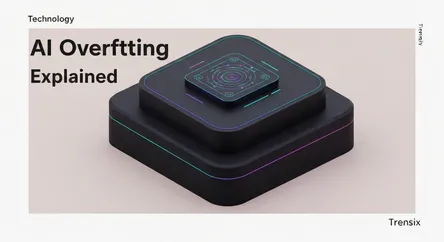Technology
AI Overfitting Explained

Learn what overfitting is in AI, a common problem where a model learns training data too well, hurting its performance on new, unseen information.
What is it?
Overfitting is a machine learning error where a model learns its training data too well, capturing noise instead of the underlying pattern. This occurs when a model is too complex for its dataset, causing it to memorize examples rather than generalize. While it performs perfectly on the training data, its accuracy drops significantly with new, unseen data. This failure to adapt is the core issue of overfitting.
Why is it trending?
As AI models grow in complexity, the risk of overfitting becomes a primary concern for developers. Building reliable AI for fields like autonomous driving and medicine requires models that generalize well, not just memorize. The conversation is trending because battling overfitting is key to advancing AI. Techniques like regularization and cross-validation are constantly being refined to ensure models are robust and trustworthy, making it a critical topic in data science.
How does it affect people?
Overfitting leads to unreliable AI. An overfit medical diagnostic tool could miss a disease in a new patient. A self-driving car might fail on a road it hasn't seen before. In everyday use, it can result in poor product recommendations or spam filters that don't work on new threats. These failures erode trust in technology and can have serious real-world consequences, making the prevention of overfitting essential for safe and effective AI deployment.